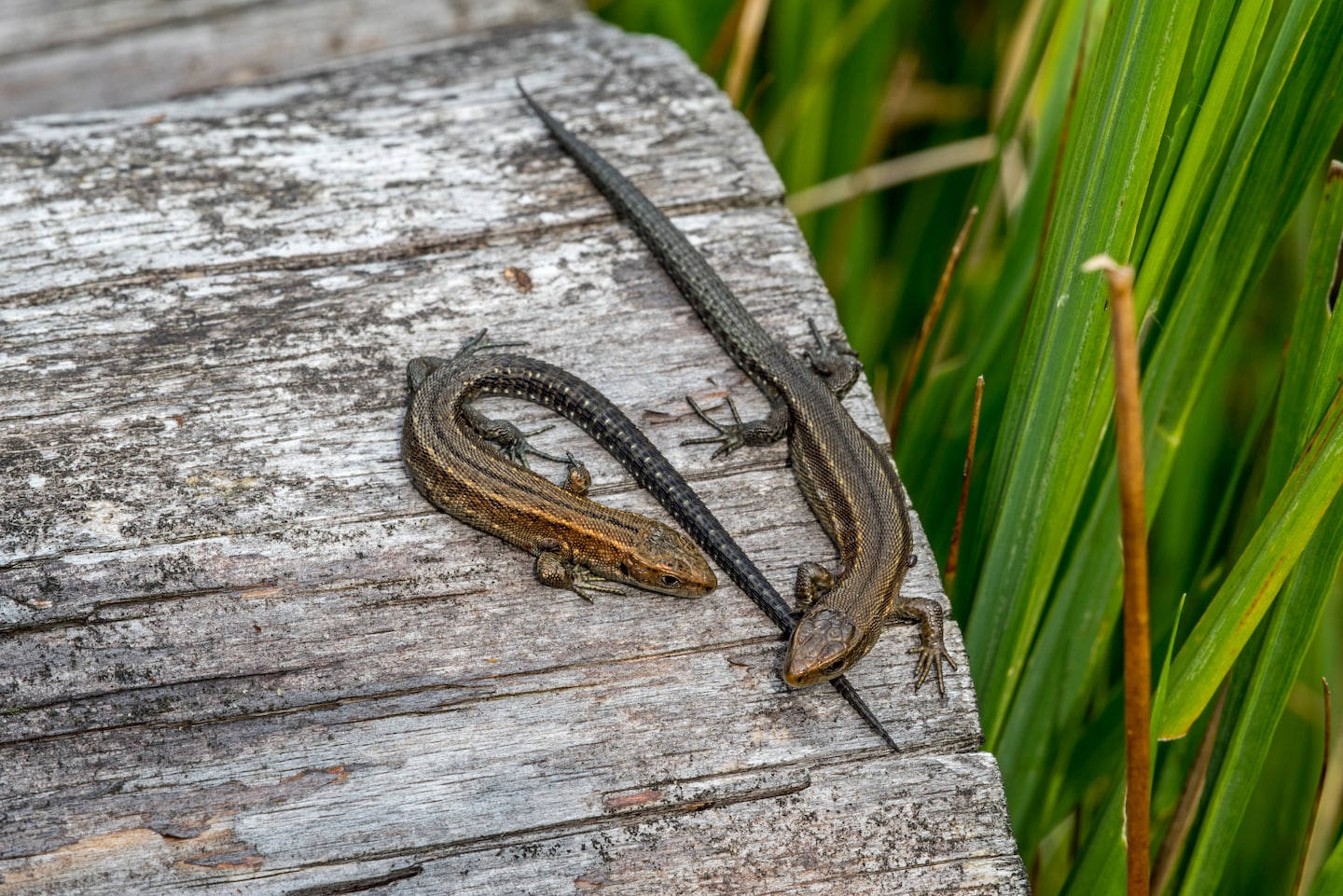Listen5 minComment on this storyCommentGift ArticleAs temperatures rapidly rise, some lizards are giving birth to young that are already old.In central France, temperatures are accelerating so quickly that many lizards enter the world with DNA that’s already damaged and aged, according to new research published Monday, diminishing their chances of survival.The findings add to the growing body of research showing the menace that climate change poses to reptiles and other wildlife as hundreds of thousands of plants and animals are threatened with extinction in a warming world. Hotter summers are not just a human problem: Around the world, heat waves send wildlife scrambling for shade. Scorched vegetation deprives animals of lifesaving cover from predators. In some cases, droughts get so bad that populations die en masse of dehydration.In the case of the lizards in France, the degradation of DNA over generations may send populations into a death spiral from which they can’t recover. Unlike in “The Curious Case of Benjamin Button,” the F. Scott Fitzgerald story in which a man ages in reverse, fewer of the lizards “born old” are expected to make it to reproductive age.Advertisement“Once you are in this circle of events, it’s quite complicated to come back,” said Andréaz Dupoué, a biologist at Ifremer, a research institute in France, and co-author of the study published in the Proceedings of the National Academy of Sciences. “It can become a vicious circle.”Dupoué’s team focused on a species called the viviparous lizard, or the common lizard. Despite the “common” in its name, the two-inch critter does something uncommon among reptiles: It can both lay eggs and give live birth.For more than a decade, his team traveled around France’s Massif Central mountains sampling blood from the lizards’ eyes and clipping off tiny pieces of their tails, in an effort to catalogue the genetic material of hundreds of individuals.With many lizards lounging in grassy areas, “they are not quite difficult to catch,” Dupoué said.AdvertisementIn the lab, the team measured caps at the ends of the lizards’ chromosomes called telomeres. Like a hem at the edge of a piece of fabric, telomeres shield the rest of the DNA from fraying or tangling.But the caps wear away as the body ages, until they can no longer provide protection. The stresses of life — including rising temperatures — can trim telomeres prematurely.Newborn lizards in declining, heat-stressed populations had abnormally stubby telomeres, Dupoué and his colleagues found. As female lizards living in hotter places potentially pass their shortened telomeres to their offspring, damaged chromosomes may accumulate across generations and drive populations down.As temperatures rise, the problem may only accelerate.“The most relevant result of the paper is the detection of a very worrying tendency towards shorter telomeres — and thus, faster aging — in populations exposed to the more demanding climatic conditions for the species,” said Germán Orizaola, an evolutionary ecologist at the University of Oviedo in Spain who was not involved with the latest research. Such populations, Orizaola said, are “at higher risk of extinction.”AdvertisementFrance is already one of the fastest-warming places in the world. This summer, the heat in Europe has been so intense that Tour de France organizers sprayed water on roads to keep them from “melting.” The French government warned that the nation is facing its “most severe drought” ever recorded.In much of Asia, tiger populations are reboundingOf the 10 lizard populations the researchers examined in France, one disappeared during the course of the study.“It was quite sad, actually,” Dupoué said. “It’s something that is really happening at a rapid pace.”The viviparous lizard, which is found from Ireland to Japan, is not at risk of vanishing any time soon. The species is hardy, and so well adapted for colder climates that it can freeze for the winter and survive.But many other reptiles are in danger of extinction. More than a fifth of all reptile species are threatened, a research team found this year, with turtles and crocodiles among the most imperiled.AdvertisementThere’s a silver lining, though, not just for lizards but for all sorts of wildlife: Measuring the lengths of telomeres could become a tool that helps biologists figure out if conservation efforts are working, Dupoué said. It may even help scientists spot species in distress before it’s too late.“We could just sample the individuals in the populations and diagnose the lengths,” he said. “And we can say, ‘Okay, this one is good; this one is in really bad shape.’ ”Sign up for the latest news about climate change, energy and the environment, delivered every ThursdayGiftOutlineGift ArticleLoading… …
Climate change stress is prematurely aging lizards – The Washington Post

